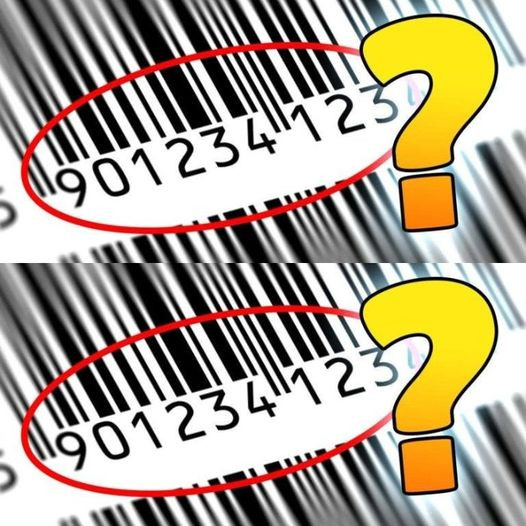ADVERTISEMENT
🧾 First Things First: What Is a Barcode?
A barcode is a machine-readable code used to identify and track products. It contains a series of numbers and parallel lines (or bars) that scanners read to access information stored in a database.
The most common barcode you’ll see on products is the UPC (Universal Product Code) or EAN (European Article Number). Each has its own numbering format — but both follow a clear structure.
🔍 Understanding the Numbers in a Standard UPC Barcode (12 Digits)
Here’s what each part means:
1️⃣ Number System Digit (First Digit)
“0” in this case
- Identifies the type of product or special function
- For example:
- 0, 1, 6, 7, 8 – Standard products
- 2 – Store-use items (like weighed meat or produce)
- 3 – Pharmaceuticals
- 5 – Coupons
- 4 – Store-specific items (non-standard)
2️⃣ Manufacturer Code (Next 5 Digits)
“12345” in our example
- Assigned to a manufacturer or company
- Identifies who made the product
- This part stays the same for all items from that brand
3️⃣ Product Code (Next 5 Digits)
“67890” in this case
- Assigned by the manufacturer
- Identifies the specific product (e.g., the difference between a 12 oz and 20 oz bottle)
4️⃣ Check Digit (Last Digit)
“5” here
- A mathematical calculation used to verify that the barcode has been scanned correctly
- It helps prevent errors in checkout and inventory systems
🌍 EAN (European Article Number): Slightly Different Format
The EAN-13 barcode, common outside the U.S., has 13 digits:
Example: 590 12345 67890
- The first 2–3 digits identify the country where the manufacturer is registered (e.g., 590 = Poland, 890 = India, 500 = UK)
- The next digits represent the company and product codes
- The final digit is still a check digit
Note: This country code doesn’t always mean the product was made there — just that the company is registered in that country.
📘 What About ISBN Barcodes on Books?
Books use a specialized version called ISBN (International Standard Book Number):
- It includes:
- Country/language group
- Publisher
- Title identifier
- Check digit
✅ Why Do These Numbers Matter?
Barcodes help retailers and manufacturers:
- Track inventory in real time
- Speed up checkout
- Reduce human error
- Identify recalls or expiration dates
- Streamline global shipping and logistics
They’re essential to modern commerce — and knowing how to read them gives you insight into how products are made, tracked, and sold.
🧠 Quick Fun Facts:
- Barcodes were invented in the 1950s but became widely used in the 1970s.
- The first product ever scanned with a UPC barcode was a pack of Wrigley’s Juicy Fruit gum in 1974.
- Barcode systems have evolved into QR codes, RFID tags, and even smart labels used in logistics and healthcare.
-
ADVERTISEMENT
